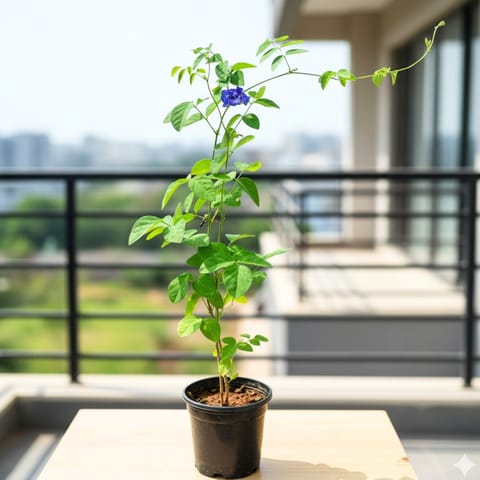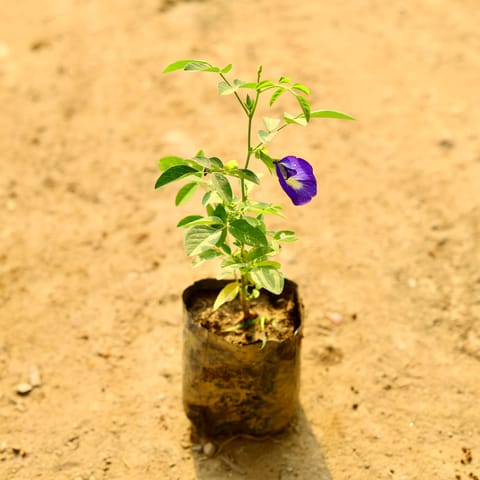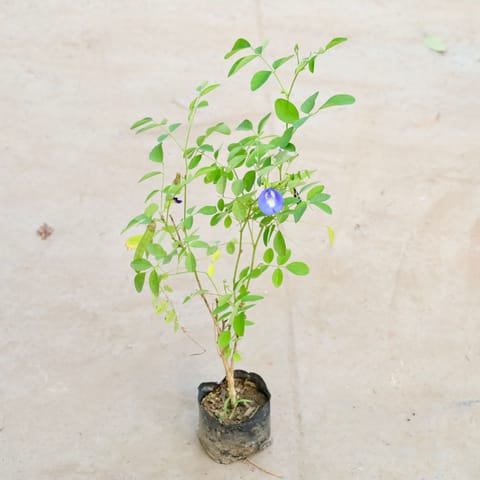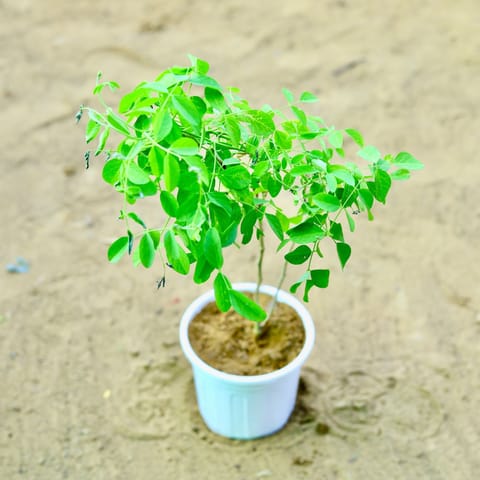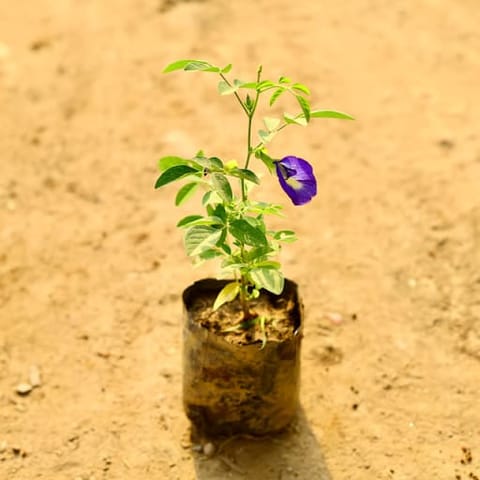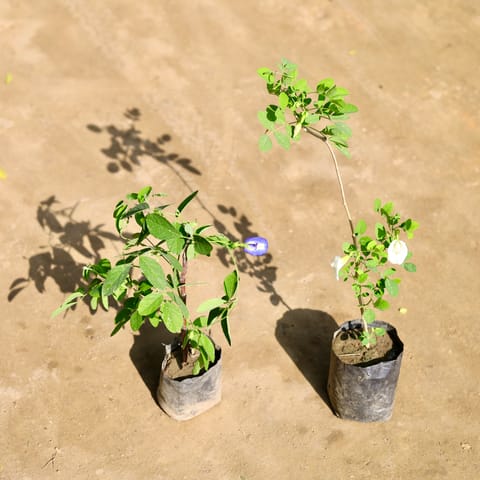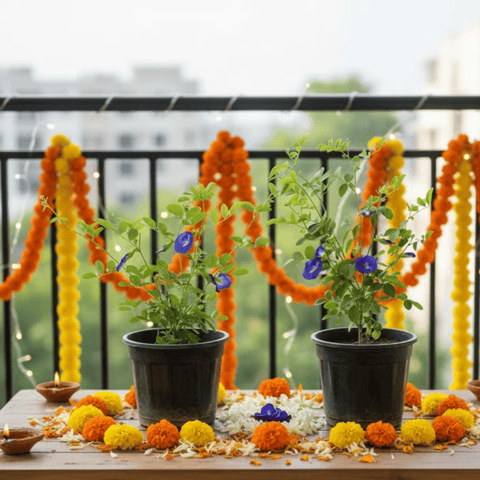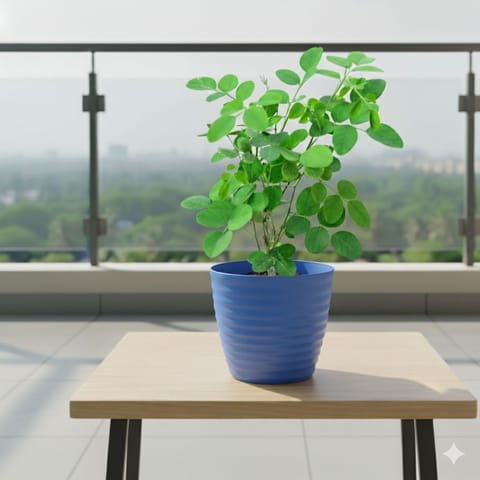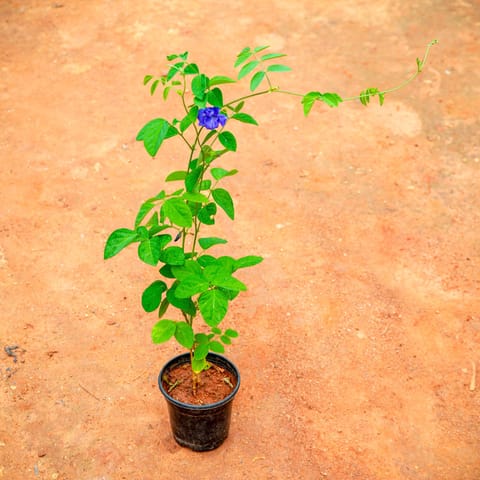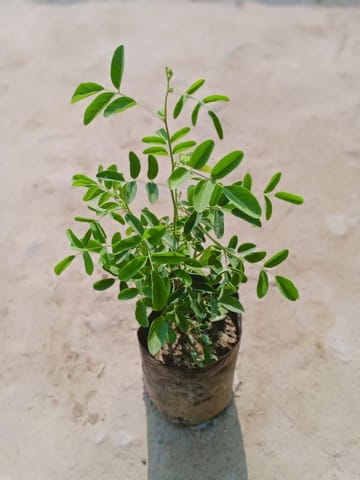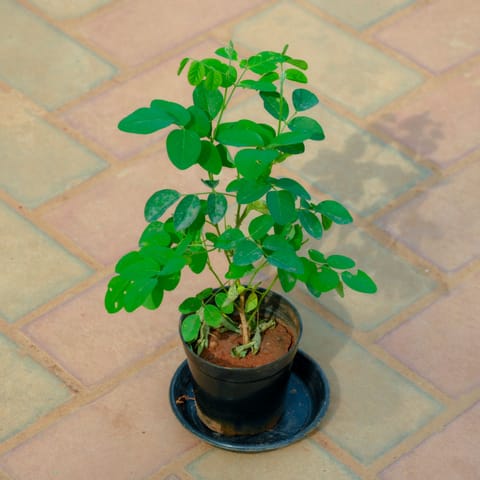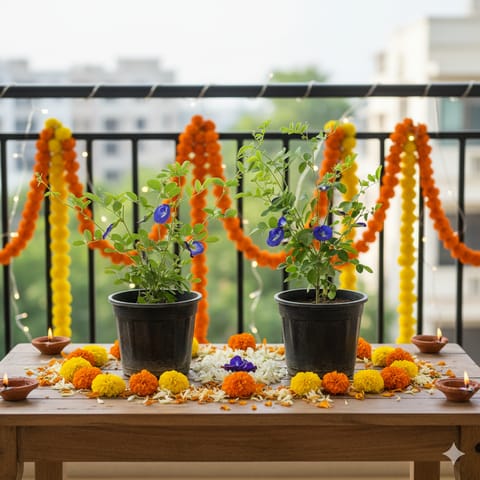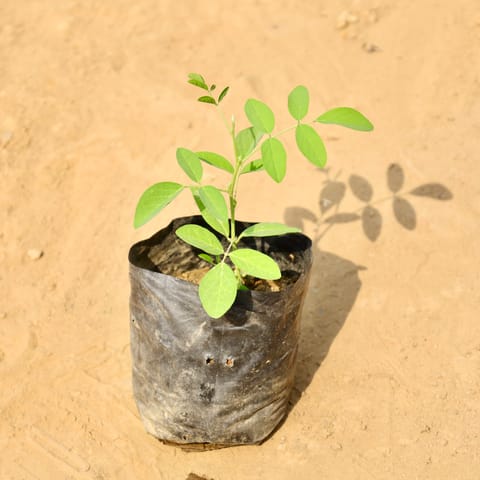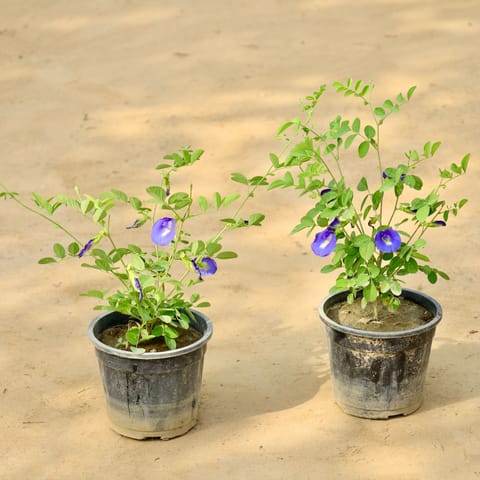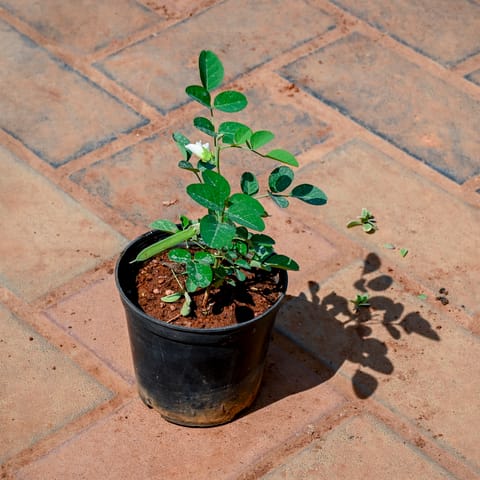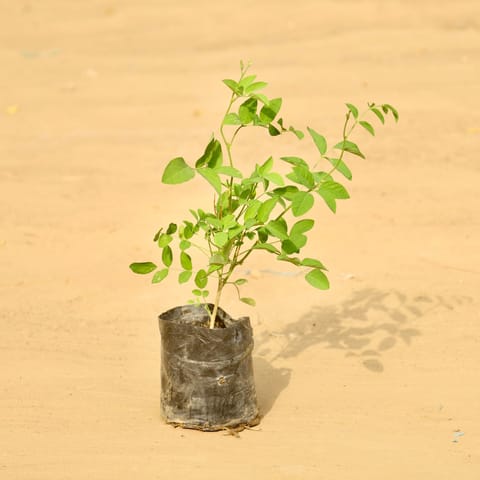Shop

Downalod our app
Search our catalog
Recent Search

Please provide your delivery pincode to see products available in your area
Recent Search
Are you sure you want to logout?
You will be logged out of your account
Your current session will end and you'll need to sign in again to access your account.
Shankhpushpi Aparajita
Aparajita plants, also known as butterfly pea, enchant with their exquisite beauty, captivating any...
Aparajita plants, also known as butterfly pea, enchant with their exquisite beauty, captivating anyone who beholds their stunning blossoms.
The striking indigo-blue petals, resembling delicate butterfly wings, unfold in a mesmerizing display of nature's artistry. The plant's graceful vines elegantly weave through gardens, adding a surreal touch to the landscape. If you wish to buy Shankpushpi plants head over to Urvann for the most beautiful and healthy plants with free next-day delivery. Beyond their visual allure, Aparajita plants hold cultural significance in various regions and are celebrated for their medicinal properties.
Benefits and Uses of Aparajita Plant
Medicinal Properties
The Aparajita plant is valued for its medicinal properties in traditional medicine. It contains compounds like flavonoids, which have antioxidant properties and are used to treat ailments such as stress, anxiety, and inflammation.
Natural Food Colorant
Many Southeast Asian cuisines also employ the gorgeous blue blossoms of the Aparajita plant as a natural culinary coloring.
Herbal Tea
The flowers of the Aparajita plant is useful in making herbal tea, which has calming and relaxing effects on the mind and body. The tea often mixed with lemon juice is known for its soothing effects relieving stress and promoting relaxation.
Maintenance and Caring Tips for Aparajita Plants
Sunlight
Aparajita plants thrive in full sunlight. Make sure to place your plant in a location that receives at least 4-6 hours of sunlight daily.
Ideal Soil Mix
The Aparajita plants love a well-draining soil mix rich in organic matter. Apply another layer of organic mulch around the base of the plant stem to conserve moisture, and suppress weeds to maintain an ideal soil temperature.
Watering
Keep the soil consistently moist but not soggy. Water your aparajita plant regularly, especially during the growing season.
Placement
Place your Aparajita plant in a location that receives full sunlight. This is an outdoor plant and thrives with oodles of sunshine.
Fertilisation
Use Vermicompost to fertilize the plant and help it grow better.
Pruning
Regular pruning of Aparajita plants will encourage branching and flowering and make the plants bushier.
Why Buy Aparajita Plants from Urvann?
Urvann has the best and most budget-friendly collection of Aparajita flowering plants. The website also offers many discounts at its online nursery with schemes such as Plants Under 99 running. Urvann guarantees free next-day delivery of plants right to your doorstep. The browsing experience is smooth and navigation is seamless. To buy Aparajita plants online, visit Urvann today!
FAQ About Aparajita Plant
1. Is it hard for aparajita plants?
Aparajita plants can withstand a variety of environmental conditions and are considered to be fairly hardy. However, in colder climates, protection may be required because they are susceptible to frost and low temperatures.
2. Which God likes the Aparajita flowers?
Aparajita is used to offer to Shani Dev and Lord Vishnu due to its blue color.
3. Is Aparajita and neelkanth same?
Yes, the Aparajita and Nilkanth flowers are the same.
4. Are aparajita blossoms suitable for cooking?
Indeed, aparajita blossoms are occasionally utilized in some cuisines—particularly in Southeast Asian dishes—as a natural food coloring. It's also used to give the food a hint of blue color.
5. Is Aparajita a creeper?
Yes, the Aparajita is a perennial climbing or trailing plant.
Aparajita plants, also known as butterfly pea, enchant with their exquisite beauty, captivating anyone who beholds their stunning blossoms.
The striking indigo-blue petals, resembling delicate butterfly wings, unfold in a mesmerizing display of nature's artistry. The plant's graceful vines elegantly weave through gardens, adding a surreal touch to the landscape. If you wish to buy Shankpushpi plants head over to Urvann for the most beautiful and healthy plants with free next-day delivery. Beyond their visual allure, Aparajita plants hold cultural significance in various regions and are celebrated for their medicinal properties.
Benefits and Uses of Aparajita Plant
Medicinal Properties
The Aparajita plant is valued for its medicinal properties in traditional medicine. It contains compounds like flavonoids, which have antioxidant properties and are used to treat ailments such as stress, anxiety, and inflammation.
Natural Food Colorant
Many Southeast Asian cuisines also employ the gorgeous blue blossoms of the Aparajita plant as a natural culinary coloring.
Herbal Tea
The flowers of the Aparajita plant is useful in making herbal tea, which has calming and relaxing effects on the mind and body. The tea often mixed with lemon juice is known for its soothing effects relieving stress and promoting relaxation.
Maintenance and Caring Tips for Aparajita Plants
Sunlight
Aparajita plants thrive in full sunlight. Make sure to place your plant in a location that receives at least 4-6 hours of sunlight daily.
Ideal Soil Mix
The Aparajita plants love a well-draining soil mix rich in organic matter. Apply another layer of organic mulch around the base of the plant stem to conserve moisture, and suppress weeds to maintain an ideal soil temperature.
Watering
Keep the soil consistently moist but not soggy. Water your aparajita plant regularly, especially during the growing season.
Placement
Place your Aparajita plant in a location that receives full sunlight. This is an outdoor plant and thrives with oodles of sunshine.
Fertilisation
Use Vermicompost to fertilize the plant and help it grow better.
Pruning
Regular pruning of Aparajita plants will encourage branching and flowering and make the plants bushier.
Why Buy Aparajita Plants from Urvann?
Urvann has the best and most budget-friendly collection of Aparajita flowering plants. The website also offers many discounts at its online nursery with schemes such as Plants Under 99 running. Urvann guarantees free next-day delivery of plants right to your doorstep. The browsing experience is smooth and navigation is seamless. To buy Aparajita plants online, visit Urvann today!
FAQ About Aparajita Plant
1. Is it hard for aparajita plants?
Aparajita plants can withstand a variety of environmental conditions and are considered to be fairly hardy. However, in colder climates, protection may be required because they are susceptible to frost and low temperatures.
2. Which God likes the Aparajita flowers?
Aparajita is used to offer to Shani Dev and Lord Vishnu due to its blue color.
3. Is Aparajita and neelkanth same?
Yes, the Aparajita and Nilkanth flowers are the same.
4. Are aparajita blossoms suitable for cooking?
Indeed, aparajita blossoms are occasionally utilized in some cuisines—particularly in Southeast Asian dishes—as a natural food coloring. It's also used to give the food a hint of blue color.
5. Is Aparajita a creeper?
Yes, the Aparajita is a perennial climbing or trailing plant.
